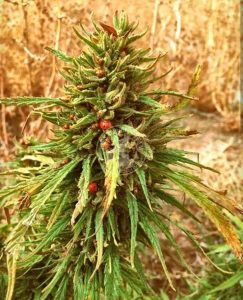Genetics: Pure Lebanese Landrace (used for resin production)
Origin: Collected by TLT in Beqaa Valley
Purpose: Hashish (sieved)
Latitude: 34° N
Altitude: 1000 – 2000 metres
Harvest: From August until 10th September
Height: 0.5 – 1.5 metres (some plants 2 metres or more)
Aroma: Incense, light citrus, cedar, pine, apple, light lemon, earthy, fruity, minty
Aroma (for the Lebanese red): floral, pine, turpentine, a bit fruity
Characteristics: Early finisher, columnar and spherical phenotypes, resinous, not too tall
Grow Type: Outdoors, greenhouse, indoors
Lebanese landrace sourced in 2019 from autumn/winter 2018 harvest in various villages growing these beautiful plants with great breeding potential. This accession originates from various villages in the Beqaa region, especially those from the North. Plants are grown starting from 1700 metres and above.
The Landrace Team has collected from these mountainous villages various accessions from families that have been growing these plants from grandfathers to grandsons. They have only grown this plant for as long as they can remember and it is known that plants from higher altitudes are the finest examples for Lebanese hash production. The plant, particularly in this region, has an ancient tradition and is well known for its great quality and as a great breeding tool as it is considered an early finisher, locally harvested from August to September the 10th.
The distinctive features and aromas of these plants are incense, earth, lemon., apple, cedar and pine. Lebanese landraces are very compact and mature early. It is also possible to find red and purple colours along with green and blonde when harvest time approaches.
There are two different structures easily distinguishable: the short classic hash plants measuring around half metre mainly grown for industrial hash production that has a columnar shape with few side branches and a long main stem and penotypes that have more side branches, more bushy and with an almost spherical shape, thicker.
The Landrace Team has two different accessions. One of which obtained from a renowned place for Red Lebanese hash and the other where green and blonde phenotypes are grown.We were also given a special selection of red and purple plants spotted in the fields but numbers are low therefore we have decided to keep them as souvenirs for ourselves and possibly grow them to see what comes out. The local farmers used the word “mutation” meaning that these plants were the only ones displaying red and purple colouration in a field of green and blonde plants.

